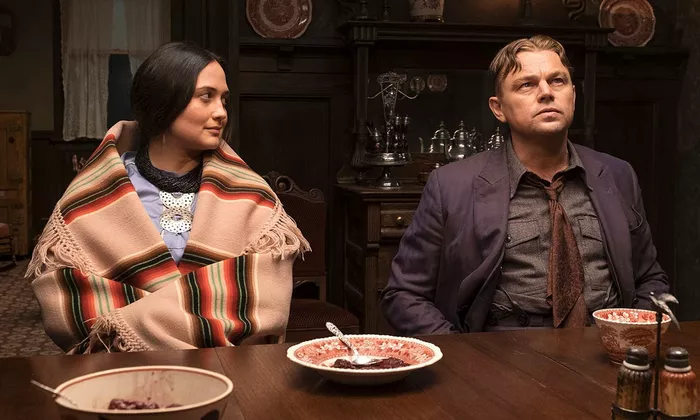A Powerful Narrative Shift Towards Authenticity and Agency
In the midst of Hollywood’s ongoing efforts to address the industry’s history of misrepresentation and underrepresentation of marginalized groups, Martin Scorsese’s “Killers of the Flower Moon” stands out as a promising example of progress. The film, which seeks to shed light on the forgotten history of the Osage tribe, has taken significant steps to improve its portrayal of Native Americans. By shifting its focus to Lily Gladstone’s character, Mollie, a Native American woman within the Osage tribe, the film transcends the pitfalls of a white-centric narrative, providing a platform to explore the intricate traumas faced by indigenous people in the United States.
Recognizing Hollywood’s Checkered Past
Hollywood has a long and regrettable history of misrepresenting indigenous communities, often relegating them to stereotypical roles or reducing their presence to mere background elements. This has perpetuated harmful stereotypes and erased the rich cultural diversity and history of Native Americans. “Killers of the Flower Moon” acknowledges this problematic legacy and seeks to rewrite the narrative.
The film’s commitment to accurate and respectful representation is a significant step forward in addressing the industry’s checkered past. Rather than perpetuating stereotypes, it strives to give Native American characters agency and depth, recognizing their importance in the storytelling process.
A Forgotten History Unearthed
At its core, “Killers of the Flower Moon” is a historical drama that delves into the Osage Reign of Terror during the 1920s—a period marked by a series of murders that targeted members of the Osage tribe. By focusing on Lily Gladstone’s character, Mollie, a member of the Osage community, the film reframes the narrative as an exploration of indigenous experiences during this tumultuous period.
Mollie’s character serves as a powerful conduit through which the film uncovers the trauma, resilience, and strength of Native Americans who endured the Reign of Terror. Rather than treating their stories as mere background elements, the film foregrounds their experiences, making them integral to the narrative.
From Background to Foreground
One of the most significant accomplishments of “Killers of the Flower Moon” is its deliberate move away from the white savior trope. By centering the story on Mollie, the film avoids becoming a typical white man’s procedural drama. Instead, it highlights the indigenous perspective, showcasing their agency, struggles, and triumphs.
This shift from a white-centric narrative to one rooted in the experiences of Native Americans is a monumental step towards more authentic and respectful representation. It challenges the traditional Hollywood formula and strives to provide a platform for indigenous voices to be heard and understood.
A Platform for Complexity and Depth
“Killers of the Flower Moon” aspires to paint a nuanced and authentic portrayal of Native Americans. By delving into the complexities of their experiences, the film aims to dispel stereotypes and reveal the multifaceted lives of indigenous people. Through Mollie’s character and her journey, viewers gain insight into the challenges, injustices, and resilience of the Osage tribe.
In a time when Hollywood is under increasing scrutiny for its representation of marginalized communities, “Killers of the Flower Moon” offers a beacon of hope. It demonstrates the industry’s willingness to listen, learn, and make meaningful changes to better represent indigenous voices. The film’s commitment to authenticity and depth not only honors the Osage tribe’s history but also paves the way for a more inclusive and equitable future in cinema.
Conclusion
“Killers of the Flower Moon” is not just a film; it’s a step towards correcting the missteps of the past and forging a more inclusive and authentic future in filmmaking. By shifting the narrative focus to Native American characters, the film challenges Hollywood’s historical shortcomings in portraying indigenous communities. Through Mollie’s story, the film offers a platform for the Osage tribe and, by extension, all indigenous people, to be seen and heard in a way that respects their history, agency, and complexity. As it seeks to rewrite the narrative and honor the forgotten history of the Osage tribe, “Killers of the Flower Moon” sets a powerful example for the film industry as it strives to create a more equitable and inclusive cinematic landscape.

